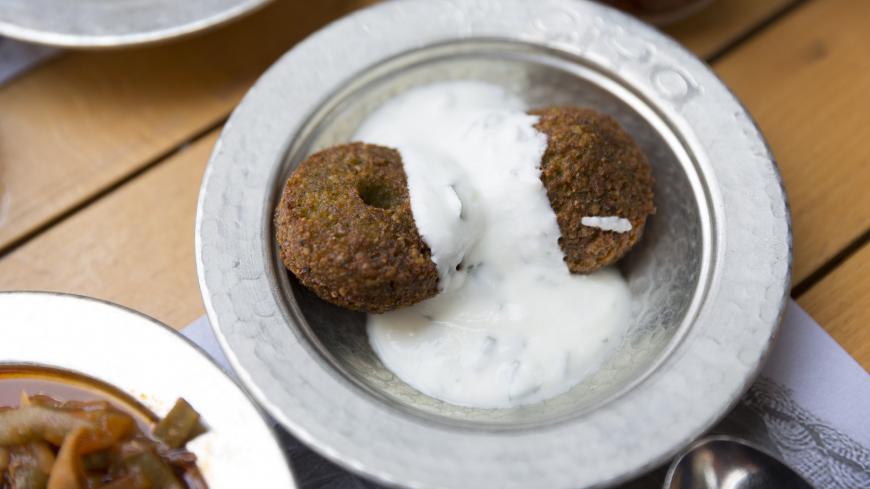Every Turkish child who lived through the '70s and '80s at some point was given a small bowl and sent to the nearest neighbor to ask for “a few spoons of yogurt.” It was a time when people still made yogurt at home. This simple process would be one of the first “chemistry experiments” most Turkish kids performed, especially girls: add fresh warm milk to the starter culture borrowed from the neighbor, find a warm place for the mixture to rest and be patient. Today's healthy-eating craze is putting yogurt back on the table. In Turkey, this means a comeback for homemade yogurt, with new recipes being shared and a growing market for sophisticated yogurt machines.
Yogurt, rich in calcium and protein, is one “white food” that your doctor would likely recommend. Turks claim yogurt as their own, on the grounds that the name comes from the Turkish verb “yogurmak,” meaning kneading or curdling. The bacterial fermentation required allowed nomads in Central Asia to make use of milk over the course of a much longer period. Also of note, the fermentation process causes the lactose level of the milk to significantly decrease, making yogurt an alternative source of calcium for people with lactose intolerance.
Either thick or slightly watered down, a pot of yoghurt can always be found in an Anatolian kitchen. The creamy substance is made from the milk of various animals — among them water buffalo, yaks, camels, lambs and goats — but cow’s milk is the most popular version in Turkey.
Yogurt has a prominent place in Turkish rituals, particularly those involving health and well-being. If you feel dizzy on a warm day, a cold glass of salty ayran — yogurt diluted with water or kefir, a fermented milk — is supposed to perk you up. If you eat something that doesn't agree with you, you’ll be offered a bowl of plain yogurt to settle your digestive system. Yogurt has also been used for centuries to counter morning sickness and bloating and to soothe sunburn.
Yogurt even occupies a place amid Turkish proverbs. “No one would admit that their yogurt is sour” indicates that auto-criticism has little place in Turkish culture. “Each hero has his own way of eating yogurt” is equivalent to “there's more than one way to skin a cat.” If an unmarried female is capable of making sweet yogurt, it is a sure sign that she will find love and peace with a husband, because after all, “sweet of hand, sweet of tongue,” suggesting the charm a woman has with words.
Given the Turkish affinity for yogurt, it seems only natural that many villages and towns still celebrate with yogurt festivals in spring, when sheep are milked after the birth of their lambs. Traditionally the first milk collected is made into yogurt as a “toast” to the healthy development of the lambs.
What is commonly known in the West as Greek yogurt is called “suzme yogurt” in Turkey. It is nothing more than drained yogurt. Once the whey is drained off, what remains thickens, acquiring a resemblance to cream cheese. Suzme yogurt awaits visitors at a Turkish tavern, “meyhane” (literally “house of drinks”), as the base of numerous mezes, appetizers, haydari being the most popular, or on its own flavored with some herbs and olive oil.
Suzme yogurt is also the main ingredient in one of Turkey’s staple soups, tarhana. Though there are regional differences, the most basic tarhana consists of dried suzme yogurt mixed with a grain (though some prefer bulgur or chickpeas) or only with yeast and flour, but in either case also with various spices and vegetables. The fun part is rolling this doughy mixture between your hands as it dries in the sun on its way to turning into powder. When it's done, the supply will get the family through the winter months.
Alternatively, when suzme yogurt is left to dry in cheesecloth, it becomes kurut, dried yogurt chunks, which are also found in Afghan and Central Asian cuisine. These disk- or ball-shaped kurut pieces are quite versatile. Kids enjoy snacking on the salty dried yogurt, and because it melts nicely, it can be grated on homemade Turkish pasta (eriste). In addition, like tarhana, it can be turned into hot soup.
In classic Anatolian cooking, yogurt typically takes the place that cream might hold in other cuisines. Unlike cream, yogurt curdles at high temperatures, so cooks slowly temper yogurt into the hot dish. Surprisingly, one doesn't even taste the yogurt in these deliciously creamy soups. There are hundreds of different yogurt soup recipes. Yayla (“high plateau”) soup is the one most commonly found at Levantine restaurants in the United States.
Robyn Eckhardt, a food journalist and author of “Istanbul and Beyond: Exploring the Diverse Cultures of Turkey,” spoke with Al-Monitor about yogurt. “It’s impossible to overstate the importance of yogurt in Turkish cuisine,” Eckhardt asserted. “Yogurt can be a stand-alone dish, perhaps with a drizzle of honey or pekmez [grape molasses], an accompaniment to other dishes at almost every meal, a main or minor ingredient in dishes like soup, baked savory dishes, meze, cakes and breads.”
Eckhardt additionally remarked, “Thanks to terroir and the animal of milk’s origin, not all yogurts in Turkey are created equal. The yogurt in Sivas evinces a super sour note. In Van, extra-long-strained [suzme] yogurt of sheep and/or goat milk is the base of a cacik [watered-down yogurt with garlic and cucumber] that’s stiff as putty and studded with a mixture of herbs. My personal favorite is Black Sea yogurt — especially of Kastamonu province — made sour-sweet from cow’s milk and so thick it might be mistaken for butter." Isli yogurt, burnt or smoked yogurt from Denizli province, has gained popularity due to its caramelized flavor.
Hande Bozdogan, the author of “Street Foods of Turkey” and founder of the Istanbul Culinary Institute, pointed out perhaps the one thing Anatolians don’t do with yogurt: mix it with fruit and eat it for breakfast, like Americans and European do. Yogurt can, however, be a part of breakfast in Turkey. In the dish called cilbir, yogurt is mixed with crushed fresh garlic and salt and poured over poached eggs.
Thus yogurt's ubiquity extends beyond its commonly known use as a condiment placed alongside all types of dishes, such as manti (mini raviolis), stuffed vegetables and Iskender kebab. Yogurt can also be used to marinate meat. In fact, it's the secret flavor enhancer in some kebab recipes.
Ali Nazik, a kebab from Gaziantep province, utilizes suzme yogurt as a transitioning taste, mixing it with smoked eggplant puree to create the base for the meat. It should come as no surprise that yogurt is also used to bake savory pastries, like borek, cookies and sweet cakes.
“I doubt you’d find a home anywhere in Turkey that isn’t stocking some yogurt,” Eckhardt said. “It is perhaps the most universal pantry staple in a country with widely varying regional cuisines.”








